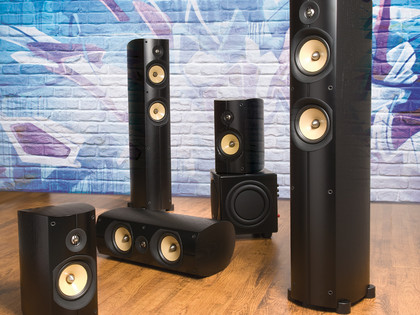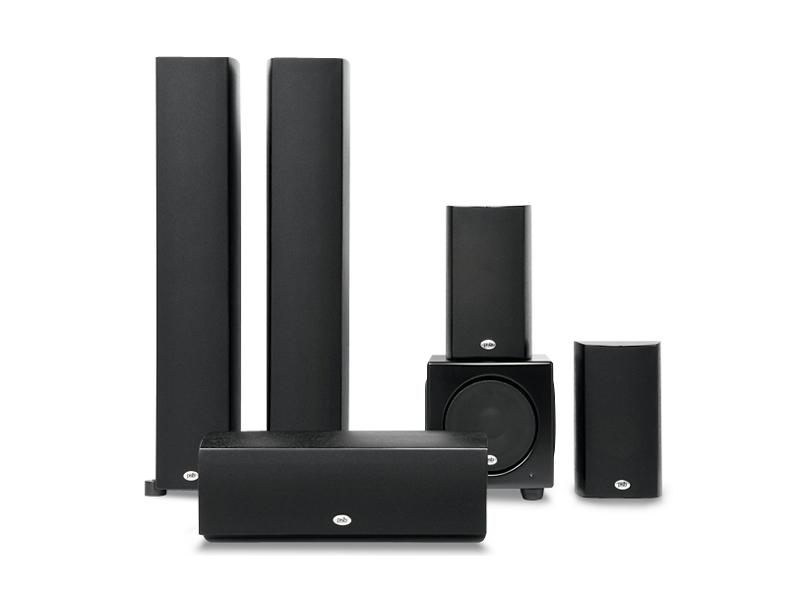TechRadar Verdict
Pros
- +
Disproportionate bass from tiny sub
- +
Fast, impactful highs
- +
Great sweetness and dynamism
Cons
- -
You only get one port bung per dual-ported tower
- -
Sub finish doesn't match
Why you can trust TechRadar
Loudspeakers are funny things and the folks who design them a rare breed of cat. While the electronics designer is a technical bod and the cable designer an abstruse alchemist, your speaker-maker is a driven passionate soul who is making speakers not because he has 'identified a market' but because he has to – he can't not. PSB is a classic example of that drive.
It's part of the agglomeration of fine speaker designers that you find in Canada (think Paradigm, Mirage, Energy...). Oddly enough, you also get other populations that breed 'em. The Scandinavians and Italians are also known for this as nations.
Anyway, PSB stands for Paul & Sue Barton, and I must confess I knew little of them until now. It transpires that PSB offers speakers from the truly acclaimed and terribly high-end to the stuff to nail to a wall around a flat telly, with no fewer than six other ranges in between, and a selection of subwoofers. Not to mention a fully mature and wide range of in-ceiling speakers and a choice of models designed for a cabinet install.
What we have on test here is the PSB Imagine series, down from the Synchrony and Platinum ranges but above the G-Design, Image and Alpha series.
This series comprises a tower, a book shelfer, a centre and a dipole/bipole. Lost my cherry I was sent a pair of the big floorstanders (£1,200 approx for a brace), a set of the smaller surrounds (£600), a centre channel (£500) and an SubSeries HD8 subwoofer. All except the sub were finished in Black Ash (when the Dark Cherry finish would have been so very much sexier).
The woofer itself was also black, but with a more matt veneer, – PSB doesn't make dedicated subs for its separate ranges. This HD8 is an over-engineered little cube of a woofer.
It looks all cute and ineffectual, but has a bonkers half kilowatt of special BASH amplification inside. (This is to do with a marriage of class AB and class D tech to get big efficiency and high sound quality), as well as a set of 8in teeth in the front in the shape of a far-wobbling and very high power-handling speaker driver.
Sign up for breaking news, reviews, opinion, top tech deals, and more.
It also sports two more tusks. These are a pair of passive radiators, diaphragms installed with no magnet, but with a nice wobbly, controlled-compliance suspension to hang it in.
While allowing the cabinet to boom out some really loud waves thanks to the huge moving surface area in such a wee box, the 'sealed' effect of the diaphragms also means that this small set of pressure cones can be energised at frequencies lower than you could ever tune the thing to, without applying an elephant's trunk port to it after installation, like a bass pipe.
The SubSeries HD woofers come in 8in and 10in sizes and in my room, there is no question, I would have been wanting the 10 (or two of 'em) for the greater scale. Yet, oddly enough for an 8in, it didn't lack in any depth.

It loved the throbbing cod-reggae bass lines of my Sting DTS 5.1 CD, and while I am trying to move on from James Cameron's Avatar BD as demo material (partly because I've almost cut a spiral into the disc with the laser in the Sony deck I use), I still find the opening frames awesome as a test sequence.
As this film opens, Sensei-Cameron wants you to feel a whole lump of cinematic awe, right up there with Close Encounters of the Third Kind. He had me at hello, from the very first frame.
Liquid Iron
The depth of the background singing of the natives and then the space travel throb was impressive, actually waking up some resonances in my room. But the real impression was from PSB's Imagine series speakers themselves. They have a snap and attack that belies their cost, with a real fat lump of quick dynamism in there, too.
What this is about is the wonder of Ferrofluid, a megabuck-per-gallon liquid iron goop, which when injected into the voice coil gap of a tweeter, damps its motion mechanically, so it will only move when pushed rather than 'flap'.
It also offers an immensely quick cooling effect being 'ferric' it will hang in the gap and stay there and, being a metallic conductive liquid, will also conduct heat from the coil to the huge heatsink that is the magnet itself. Thus, the coil doesn't heat up with big peaks and instead of the electrical qualities of that coil changing as it gets superheated, it works much better.
And if that's all too technical for you, just know that all the above jargon translates to a more emotionally involving detail experience. It's in the strings in Sting's Food For a Crow, or better yet, the impactful crescendo as we see the spaceship off the planet Pandora, or the thwap! as the shuttle enters the thick atmosphere of the moon.
And it can't all be the posh tweeters, even if they are all the exact same Titanium dome all round. It has to be that 5.25in midrange driver, too. Used just once in the surround/'book shelf' model, but with two each in the towers and centre enclosures, these are made of mineral-loaded Polypropylene with pukka rubber surrounds, rather than some foam, and are well-damped and long of travel.
Curved cabinets
The enclosures are as sexy and well put together as any I have seen. The grilles attach snugly, and should you choose to forgo them, there's still a natty PSB logo mounted in front of the tweeter. I still wished I'd auditioned a set finished in Dark Cherry, though, as my room has a wood finish and would have offset more of the form of the speakers' shapes.
These are described as compound-curved, which is all about avoiding the standing waves caused by having opposite-facing and parallel box internal surfaces.

In their rears, the Imagine speakers all have ports. One each for the bookshelf and centre and two on the towers. The latter arrive with a single plug and you can play with blocking one or other port. As one is long and the other very short, you have options, using neither or either port hole blocked, and are encouraged to experiment.
The blocker plugs are substantial rubber things, but you only get one and the other is an option, which seems a parsimonious thing to do if the makers mean you to play and see, and I think they do.
PSB's website and manuals reveal a deeply committed outfit with a passion for music and good. It just comes across in how they write about their speakers. The manuals, in particular, are fantastically detailed and considered, advising the PSB buyer on everything from speaker placement to the dangers of driving low-powered amplifiers to their limits.
These Imagine speakers are an array that's very easy to fit and setup. And while it's three grand's worth of kit, I reckon they hit way above their weight and can be compared to other brands' systems around the £5,000 mark.
They have a lovely sound of real quality and power and all they lacked was the bigger scale that serious money can buy. But of course, PSB has two more ranges upstream for that.
If you're in the market for a new surround system, I'd definitely advise heading to your dealer for a demo of these classy Canadian cabinets.
Follow TechRadar Reviews on Twitter: http://twitter.com/techradarreview
